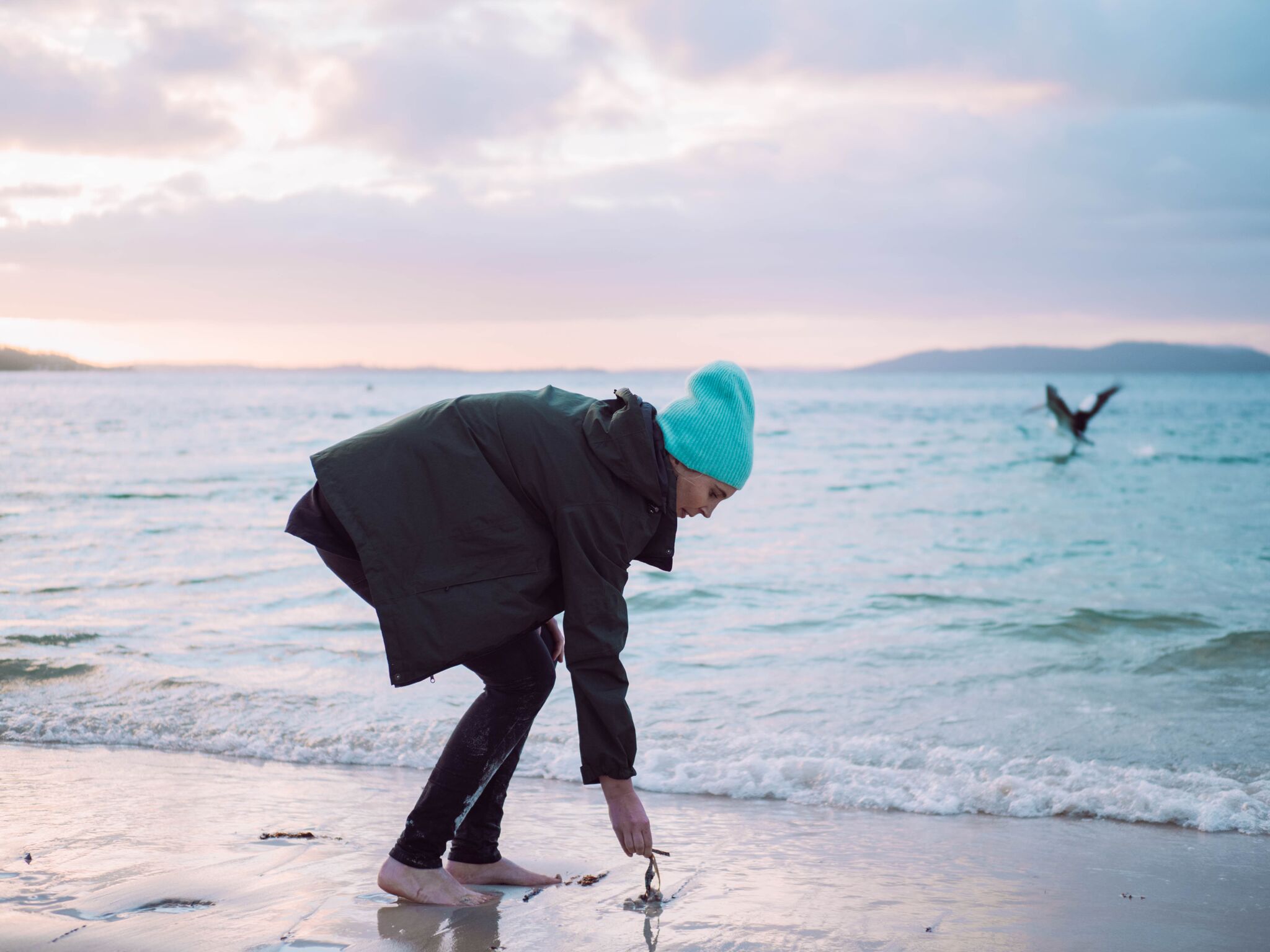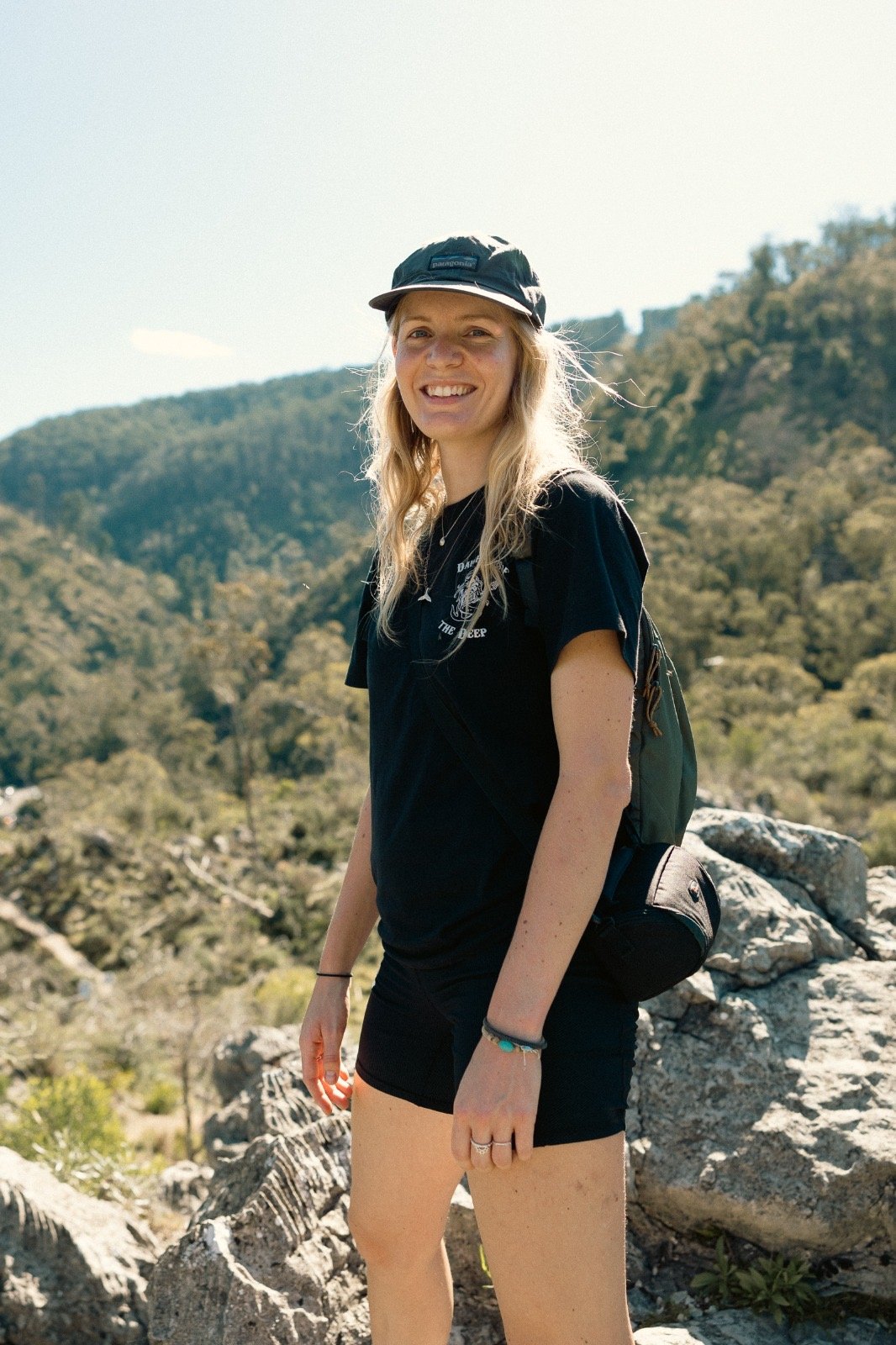
Meet our Crew
-

Dr Giulia Ferretto
Giulia has loved the sea since childhood and became a SCUBA diver young, fueling her passion for marine biology. After a PhD developing Operation Posidonia restoration methods, she is now a Postdoctoral Fellow at UNSW, focusing on scaling and future-proofing seagrass restoration. Her research explores seagrass functions and human impact mitigation, alongside science communication.
-

Erin McCosker
Erin is a marine ecologist at UNSW passionate about conserving seagrass and other marine habitats and the biodiversity that they support. She is actively involved in restoring Posidonia australis and loves seeing all of the life that returns when degraded areas recover. Erin is interested in learning more about how to optimise seagrass restoration so that it can be scaled up.
-

Dr Chanelle Webster
Chanelle has a passion for advocating for ‘marine underdogs’ which she considers to be the less charming but incredibly important ocean habitats including seagrass meadows and algal forests. As a marine scientist, she studies how the environment and people affect these habitats to improve their conservation. She enjoys challenging herself to become a better storyteller to communicate her science.
-

Natalie Coy
Natalie is a PhD candidate at UNSW, researches genetics and microbial ecology to restore and future-proof Posidonia australis seagrass meadows. She combines field and lab approaches to tackle marine restoration challenges. Previously, she earned a dual Bachelor's degree from UC Berkeley and researched aquatic invasive species and nutrient stress biomarkers in phytoplankton.
-

Ann Nielsen
Ann's background in environmental engineering and marine restoration drives her curiosity toward nature's ecosystem engineers, particularly habitat-forming species such as seagrass and coral. She is passionate about researching solutions to improve marine habitat restoration by using restoration designs that mimic how these critical habitats affect their environment.
-

Jack Vitnell
Jack's background in marine project management makes him well-suited for his role as Project Coordinator. With significant experience at both Manly and Sydney Sea Life aquariums, overseeing operations at Seabin, and exploring the startup sector, Jack brings a diverse skill set to the Operation Posidonia team. Outside of work, he can be found surfing, diving, climbing and sailing.
-

Dr Claudia Santori
Claudia travelled from Italy to Australia in pursuit of her PhD at the University of Sydney in freshwater turtle ecology and conservation, which she completed in 2020. Since then, she has worked in marine natural resource management and environmental consulting. She is now a Project Coordinator at UNSW and the Sydney Institute of Marine Science, organising field work and outreach events.
-

Maddy Langley
Maddy is a PhD candidate at the University of New South Wales who loves boating, diving, and seagrass. She began 'underwater gardening' in 2019 with the launch of Operation Posidonia in Port Stephens, and she hasn't looked back. She is now focusing her research on improving restoration outcomes for Posidonia australis, and investigating the role of eco-moorings in the recovery of estuary flora and fauna.
-

Prof Alistair Poore
Alistair is a marine ecologist from UNSW with research interests in seagrasses, seaweeds and the fauna that lives in vegetated marine habitats.
He specialises in plant-herbivore interactions and the responses of marine plants and animals to environmental change.
-

Prof Adriana Verges
Adriana is a marine ecologist based at UNSW Australia and the Sydney Institute of Marine Science. She hails from the Mediterranean, where she grew up surrounded by lush meadows of Posidonia oceanica, the only Posidonia species found outside of Australia. She’s one of the lead investigators of the sister-project Operation Crayweed, which is restoring another important species, crayweed, in Sydney reefs.
Operation Posidonia Collaborators
-

Professor David Booth
David Booth a Professor of Marine Ecology in the School of Life Sciences at UTS, David has published more than 180 papers about reef-fish ecology, climate change and other anthropogenic impacts on fishes and fisheries, in the Caribbean, Hawaii, and the Great Barrier Reef. He has spent nearly two decades monitoring the migration of tropical fish down the East Australian Current, past Sydney.
-

Dr David Harasti
David Harasti is a Senior Research Scientist based at the Port Stephens Fisheries Institute (NSW DPI). He is a marine biologist with over 20 years’ experience working on threatened marine species and marine biodiversity. David previously worked in threatened species management, focusing on recovery plans for species such as grey nurse, great white sharks and black cod, before commencing research on evaluation of Marine Protected Areas in 2008.
-

Dr Tim Glasby
Tim is a marine ecologist based at the Port Stephens Fisheries Institute (NSW DPI) with over 20 years’ experience working in temperate marine systems. He coordinates research on seagrass ecology and distribution, human impacts on marine biodiversity, and impacts of marine pests. Tim conducted the early Posidonia restoration work in Botany Bay that is the basis for our current 'Operation Posidonia' restoration efforts in Port Stephens.
Past Collaborators
Clayton Mead- Clayton is a research assistant at UNSW and has a background in marine science and underwater restoration. He assisted with Operation Posidonia as a volunteer during his undergraduate studies and is passionate about the conservation of marine habitats. He has also worked in marine education and outreach programs and is a keen diver and snorkeler, having grown up exploring the NSW coastline.
Derrick Cruz- Derrick grew up snorkelling and exploring the estuaries and seagrass meadows of NSW. He is now a passionate fish ecologist and holds particular interests in range-shifting species, habitat restoration and the enhancement of wild fisheries. He has worked with DPI and UNSW on various field-intensive projects and enjoys promoting sustainable practices to younger generations.
Professor Gary Kendrick- Gary is a marine plant ecologist who is passionate about understanding how we both can protect and use our rich marine environments. He has multiple interests including understanding biodiversity and ecology of temperate and tropical seagrass meadows and reefs, conservation and restoration of marine foundation species, and educating people about coastal and marine ecosystems. Gary's experimental work on the ecology of seagrass meadows
Graham Housefield- Graham is a widely experienced technician currently at the Port Stephens Fisheries Institute, primarily managing research aquaria systems for the study of various organisms from invertebrates to fish and various species of seagrass. Previously he has had well over 30 years’ experience in aquatic chemistry and ecology at CSIRO, Sydney University and now Fisheries. He worked with Tim on many projects over the last 20 years including the Botany Bay project, studies into Posidonia seedlings and other aspects of seagrass communities. He has been instrumental in the collection and care of donor Posidonia shoots for restoration trials and has a veritable wealth of knowledge about local Port Stephens waterways and estuaries.
Dr John Statton- John has a deep love for the marine environment and aquaculture. He has developed new methods for the cultivation of seagrasses and has developed seed-based restoration for Australian seagrasses. John has developed a highly successful seagrass tank culture program in the Seagrass Research Facility at the University of Western Australia where he has successfully grown 6 of the 12 seagrass genera so far.
Lana Kajlich- Lana’s work explores innovative science outreach via citizen science, education and the power of the arts (including storytelling). She is interested in exploring the links between the social and ecological concerning the large-scale restoration of marine habitat across Port Stephens and Sydney. Her background is in both education and ecological restoration. She is also an avid fan of the marine diversity of the eastern Australian coastline.
Dr Elizabeth Sinclair- Liz is an evolutionary biologist. She uses molecular approaches to understand patterns of genetic diversity and connectivity at different spatial scales in temperate Australian seagrasses. Her current research focuses on genomic and physiological adaptation of seagrass in changing climates. Her research contributes to an understanding of the processes impacting marine connectivity across the Australian continental shelf ecosystems and makes an important contribution to the development of benthic biodiversity conservation planning and restoration.
